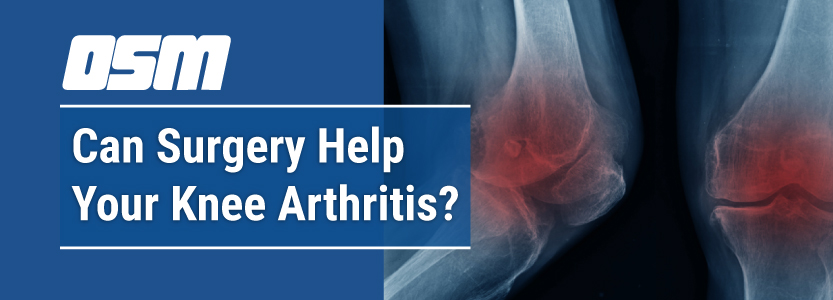Article featured on Arkansas Surgical Hospital
Knee arthritis is a common condition that typically leads to pain, stiffness, and swelling in the knee joint. If your knee arthritis has caused substantial damage to the cartilage or bone, you may need surgery. An orthopedic surgeon can take out the damaged portions of the knee joint, remove bone spurs, and repair torn ligaments.
What Causes Knee Arthritis?
Knee arthritis is caused by the breakdown of cartilage in the knee joint. Cartilage damage can be caused by injury or wear and tear from aging, also known as osteoarthritis. It can also result from diseases that cause painful swelling in your joints, such as rheumatoid arthritis or psoriatic arthritis.
When the cartilage in your knee breaks down, it leaves the bones in the joint unprotected. This can result in swelling, pain, and stiffness in your knee. Your doctor may recommend surgery if you have severe symptoms that haven’t responded well to other treatments.
Symptoms of Knee Arthritis
The symptoms of knee arthritis can vary from person to person, but often include:
- Swelling and stiffness in the knee joint
- Difficulty moving the knee
- Pain that gets worse with activity
- A clicking or grinding sound when you move your knee
Pain from knee arthritis can be felt in different areas of your knee, depending on where your joint is affected. Treatment for knee arthritis depends on the extent and location of the damage to your cartilage.
Non-Surgical Treatments for Knee Arthritis
There are a number of non-surgical treatments for knee arthritis. These include:
- Anti-inflammatory medications
- Physical therapy
- Ice
- Injections
- Platelet-rich plasma therapy
Discuss your options with your doctor to decide which treatment for knee arthritis is best for your situation.
Surgery for Knee Arthritis
While non-surgical treatments may improve function and provide pain relief in some cases of knee arthritis, surgery is sometimes necessary.
There are three main types of surgery for knee arthritis:
- Total knee replacement surgery replaces a severely damaged joint with an artificial implant that can restore function and improve mobility.
- Resurfacing involves removing part of a damaged bone to replace it with an artificial implant.
- Debridement removes debris or bits of cartilage that may have built up inside the knee joint.
Your surgeon will determine which procedure is best for reducing your symptoms and improving your knee function. The specific procedure you undergo will depend on the severity of your arthritis and where the damage is located in your knee.
During a surgery for knee arthritis, your surgeon will make an incision over or near the site of the damage to perform any necessary repairs or removal of inflamed tissue. In some cases, your surgeon may use arthroscopic equipment to view and fix the damage in your knee.
Recovering from Surgery for Knee Arthritis
Depending on your surgeon’s recommendation and how bad your arthritis is, you may require six weeks or more off work after a major knee surgery. How long you’ll need to use crutches or a walker/cane depends on the severity of the damage to your knee and any other medical concerns you have that might affect your recovery.
Rehabilitation after knee surgery typically lasts between three to six months. It includes physical therapy and exercise to get you back to your previous levels of strength and mobility. If you don’t stick with rehabilitation, there’s a chance your pain could come back, so it’s important to follow all of your surgeon’s instructions as you recover.
Do You Need Surgery for Knee Arthritis?
Severe knee pain can make simple tasks difficult to complete and keep you from doing things you enjoy. If you’re living with knee arthritis, it might be time to call your doctor and see the best treatment options for you.



